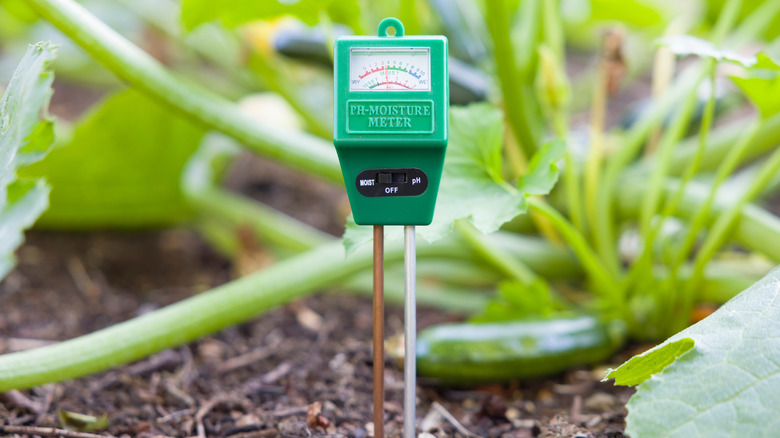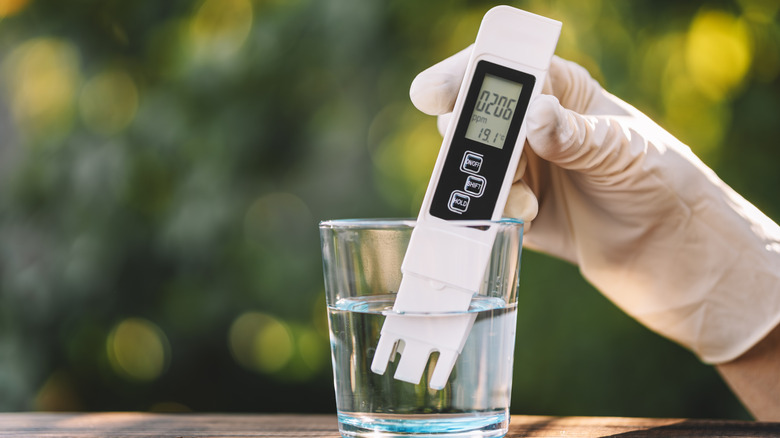The Best PH Testers For Healthier Soil And Bigger Harvests This Year
We may receive a commission on purchases made from links.
A proper soil pH is key to the success of your garden, with most plants enjoying a soil with a pH between 6.2 and 6.8. While you could use simple pH test strips to check the pH and health of your soil, investing in a great pH tester can help you make the right decisions. Digital pH meters are easy to use, but they can also be sensitive to harsh environmental conditions and need frequent calibration to provide accurate readings. If you need help accurately measuring your soil's pH or general planting advice, you can contact your local extension service for help with your garden.
You should also consider the price. The Yamron four-in-one soil moisture meter and the Suplong three-in-one soil moisture meter are great budget-friendly options that eliminate some of the more elaborate testing processes associated with kits. The Yamron meter measures soil temperature, moisture, sunlight, and pH values beyween three and nine, plus it features a 2-inch LCD screen to read measurements. The Suplong meter measures sunlight, moisture, and soil pH ranging from 3.5 to eight, but the great thing about this meter is that it doesn't need batteries. The Hannah Instruments GroLine soil pH tester is a slightly larger financial investment, but this pocket-sized meter measures a pH range of zero to 12 and has up to 1,000 hours of battery life. No matter which you get, check if it needs calibrating; if it does, make sure you know how to do it.
Calibrating your pH tester
There are many digital pH testers that don't require calibration, but some, like the GroLine tester, require regular calibration to ensure accurate readings. A properly calibrated pH tester helps you identify problems with soil acidity so you can fix imbalances. You should follow your specific tester's instructions, but here's how the process might go and when you usually need to calibrate the meter.
If the pH electrode is new, old, or recently cleaned, it probably needs calibrating. Two common methods are multi-point calibration and two-point calibration. Multi-point calibrations might involve mid-point, low-point, and high-point solutions. Using this method, start with the neutral solution to clear the other calibration points: First, rinse the probe with demineralized water before dipping it in the neutral solution for one to two minutes, repeating with the low- and high-point solutions. Two-point calibration involves just acidic and neutral solutions. If your garden's acidity is off, there are ways to make your soil more acidic, such as using iron sulfate, or more alkaline, such as using garden lime.

